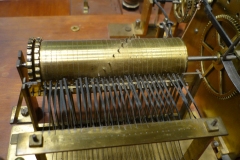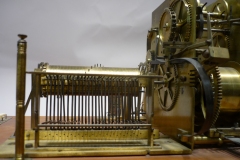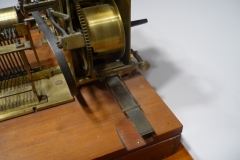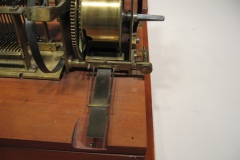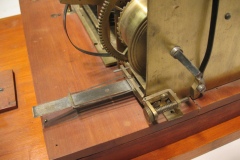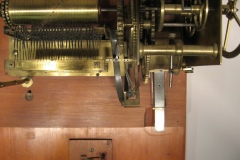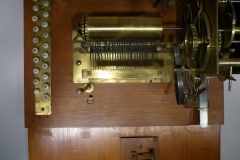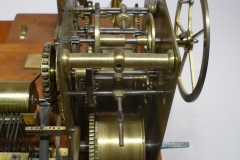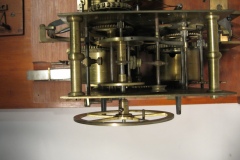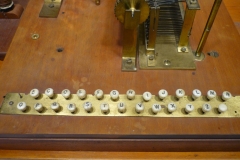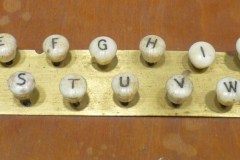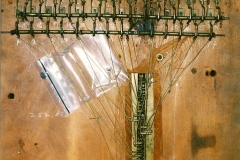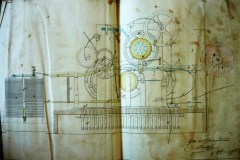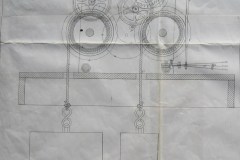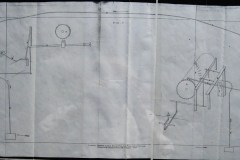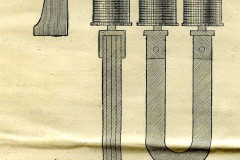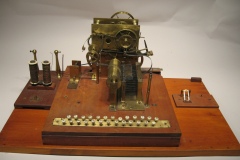David Edward Hughes First Model Printing Telegraph
This is the earliest models of Hughes printing telegraph as described in his British 1855 patent #2085 and American 1856 patent # 14917. The patent model instrument is in the Smithsonian Museum, Washington DC. (Photographs taken by the author).
This telegraph instrument communicated with an identical instrument at a separate telegraph office over a single telegraph wire using a ground return. The two instruments ran in synchronism (a start up procedure ensured they were synchronized) and transmitted data using a form of pulse position modulation (yes in 1855!). Messages were typed in as alpha characters and were printed out on a paper tape at the receiving station. These instruments were full duplex in their operation. The instruments were powered by a weight driven clockwork mechanism.
From the pictures the following can be seen:
the alpha keyboard, scanning helix mechanism, linkages from the alpha keys, the vibrating spring strip that provided the timing with the frequency adjustment (and temperature compensation), the reduction gearing and clutches, print wheel and the Hughes electromagnet sensitive trip relay.
Missing or incomplete are the drive weights, the linkages from the vibrating spring to operate the oscillating anchor and escapement wheel and the components that make up the Hughes trip relay.
This was the first of many models that were continually upgraded and modified over approximately 100 years of service.
Significantly more in depth discussion, theory of operation and history of development can be found in the book “Before We Went Wireless” Chapters 3 & 4 and Appendix 1-1.




